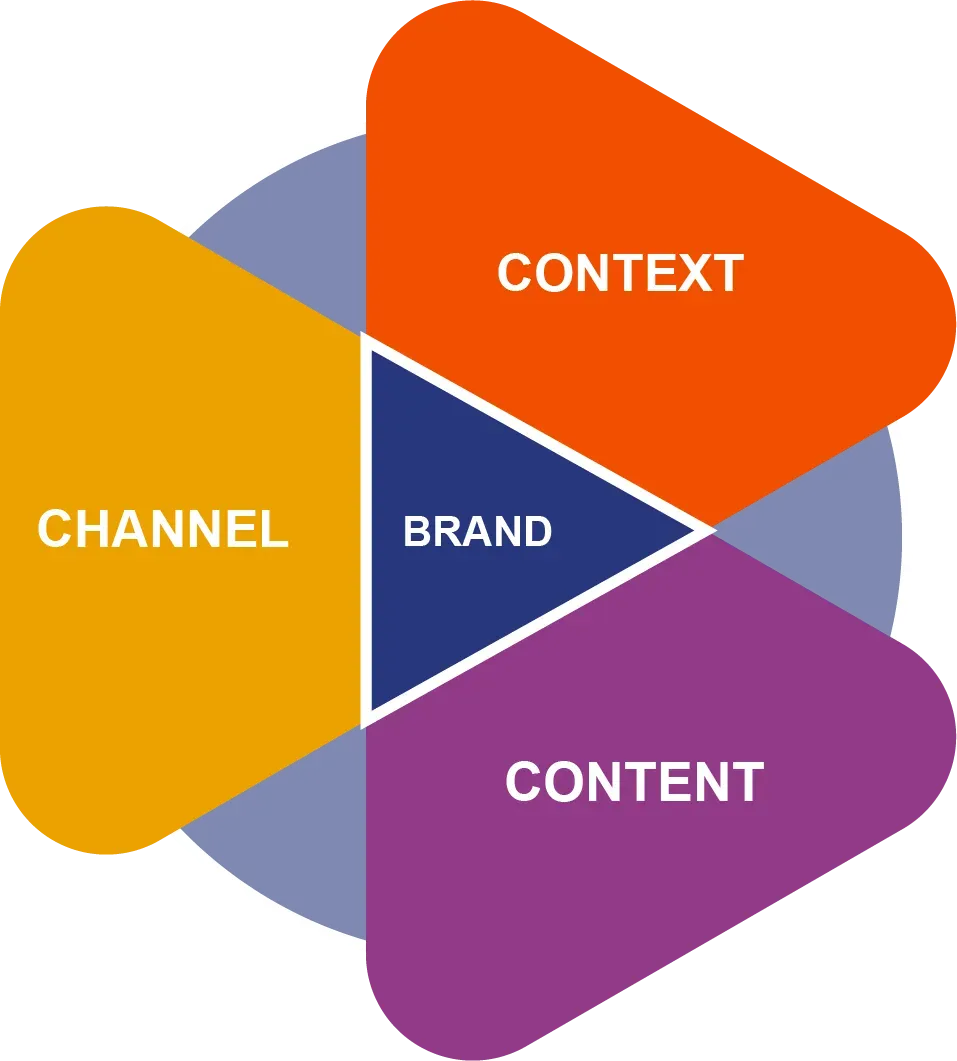Mastering B2B Marketing in China: Delving Deeper into Context, Content, and Channel

by Mike Golden
Across a few WeChat group conversations last week, I saw a recurring theme – confused marketers asking: “Which channel is the best for B2B marketing in China?” To me it seems like one of those esoteric philosophical questions – “How long is a piece of string?” or “What is the sound of one hand clapping?”
Navigating the B2B landscape in China requires a deep understanding of three critical pillars: context, content, and channel. Each of these plays a pivotal role in crafting a marketing strategy that resonates with your Chinese business audience. This blog aims to explore these pillars in greater depth, offering insights and practical tips for businesses looking to succeed in the dynamic Chinese market.
At the core of these three pillars is your brand – without a strong position and brand message, you’ll always have trouble effectively penetrating the complicated China market. What is the key message that resonates with your target audience? Does it make sense in Chinese?
Let’s have a look at these three pillars, which form the backbone of Brandigo’s China Marketing Methodology.

Context: Navigating the Intricacies of the Chinese Market
Understanding Language, History, and Cultural Nuances: Effective communication in China goes beyond mere translation. It involves appreciating and integrating cultural nuances, historical references, and local business etiquette. For instance, understanding the role of Guanxi (personal relationships) in business relationships can significantly impact partnership building and negotiation strategies.
Target Audience Analysis: Deeply analyzing your target audience in China is crucial. This includes understanding the industry sector, company size, decision-making processes, and regional characteristics. For example, the approach to engaging with state-owned enterprises in Beijing may differ significantly from that for private enterprises in Shenzhen. What pain points does your audience have? How does your product or service make their life better or easier?
Keeping Up with Market Trends: The Chinese market is characterized by rapid changes in technology, consumer preferences, and regulatory landscapes. Businesses must stay informed about these trends, such as the growing emphasis on digital solutions and sustainability, to remain relevant and competitive.
Content: Developing Engaging and Relevant Marketing Material
Creating Value-Driven and Insightful Content: In the B2B context, content that offers real value and insight is highly valued. This can include in-depth industry analyses, expert commentaries, and educational materials that position your business as a thought leader in your field.
Customizing Content for the Chinese Market: Content should be carefully tailored to reflect the preferences and interests of the Chinese audience. This involves using language and visuals that resonate with local culture, incorporating case studies relevant to the Chinese market, and addressing the specific pain points and aspirations of Chinese businesses.
Innovative and Digital-Focused Content Strategies: With China’s advanced digital ecosystem, innovative and digitally focused content is crucial. This includes leveraging multimedia formats like videos, podcasts, and interactive webinars that cater to the preferences of a digitally-savvy audience.
Channel: Leveraging the Right Platforms for Maximum Impact
Digital Platforms: The Backbone of Chinese B2B Marketing: Digital platforms like WeChat and Baidu are central to any digital marketing strategy in China. Understanding each platform’s unique audience and functionalities, such as WeChat’s mini-programs or Baidu’s search engine capabilities, is crucial for targeted marketing campaigns. Other platforms, such as Zhihu, Weibo, Douyin (TikTok) and Little Red Book may have a place in your strategy, depending on your target audience and budget.
Integrating Social Media and E-commerce: Platforms like WeChat and Douyin not only serve as social media channels but also integrate e-commerce functionalities – although serious e-commerce players will still look to Alibaba (Tmall) and JD as the major e-commerce platforms. Utilizing these platforms for B2B marketing can help bridge the gap between marketing and sales, offering a streamlined customer experience. Be prepared for major investment if you are looking to launch a Tmall store – something that Western marketers are usually surprised about.
The Importance of Offline Engagement: Despite the focus on digital, offline channels continue to play a significant role in China. Trade shows, industry conferences, press conferences, and face-to-face meetings are invaluable for creating impactful news that can be promoted digitally.
Importance of Influencers (KOL): The line is becoming blurry between B2C and B2B (so-called B2B2C in some contexts) – this is reflected in influencer marketing, or Key Opinion Leader (KOL) marketing. There is a massive range of KOL in China – including e-commerce live-streamers who sell product to video and photo KOL who write and publish stories about your brand.
Conclusion: The Path to Successful B2B Marketing in China
The journey to mastering B2B marketing in China is intricate and requires a well-rounded approach that encompasses a deep understanding of the local context, creation of tailored and insightful content, and strategic use of the most effective channels. By focusing on these three pillars and continuously adapting to the market’s evolving dynamics, businesses can achieve significant success in China’s challenging yet rewarding B2B landscape.New Paragraph






